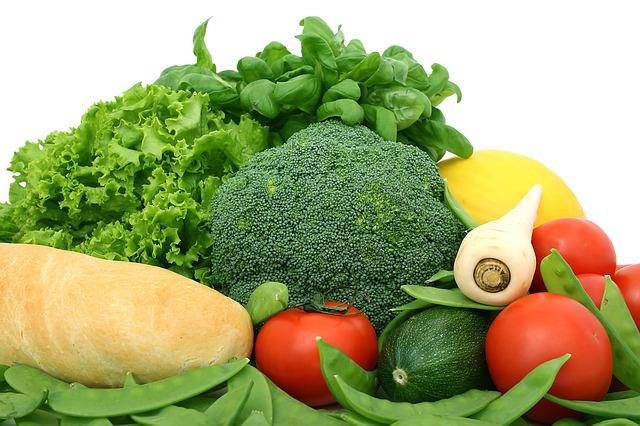
Carbo-loading foods can also be useful before long hikes or races. These types of activities can require a lot of energy. Carboloading foods can help avoid muscle fatigue. However, unless you're planning on a long marathon or ultramarathon, you should not try carbo-loading before the race.
Carbo-loading is a term that refers to carboloading meals, which are eaten within the hours and days prior to endurance events. You should only consume foods with low glycemic scores as this will reduce your blood glucose levels. For example, a high protein meal can be a better option than large pasta dishes, which could boost your performance.
A healthy diet should have at least a few carboloading foods. The best time to carb-load is two to three days before an event. Your muscles will feel rested and ready to go when you do this. The average person should consume between 2.5 and 5.5 grams per kilogram of bodyweight each day. Do not eat too many carbohydrate if you are nervous. Instead, snack on crackers and chicken noodle soup.
Glycogen stores can last for about 30 minutes during exercise. Carbo-loading foods before you exercise will increase the amount of glycogen available. You'll have more fuel to last longer and less fatigue. This can make it easier to run a marathon, or for intense training. You can also donate any carbohydrates that you don't use to the Missoula Food Bank, if you are concerned about what your diet looks like. You won't regret it!
Professional athletes aren't likely to benefit from carbo-loading during their long-distance races. Two hours is the average time for basketball, soccer, and football games. Runners typically spend their entire training days standing around, so they are unlikely to be able to gain benefits from carbo-loading before a marathon. For marathoners, however, the benefits can be huge as extra carbohydrates can help with recovery.

When you're training for a marathon you need to carb-load before you race. Marathoners should typically eat around four pounds more than usual. This extra weight is a sign they have successfully carb loaded. They'll also be able store three g of water from the extra carbs, which will come in handy during their race. As a result, they'll have enough fuel and hydration for the entire duration of the event.
Carboloading can have nutritional benefits but there are also risks. Avoid refined carbs if you are preparing for endurance events. You are more likely to experience a spike in blood sugar if you eat these foods. Furthermore, too many refined carbohydrates can cause unhealthy swings in your blood sugar. These spikes can be very dangerous for your body and cause you to feel hungrier than usual.
You should choose carbo-loading foods that are low in fat and high in fiber. High-fiber foods may have some health benefits, but they should be limited. Too much fiber can cause stomach discomfort. As a result, you'll need to focus on low-fiber and high-carbohydrate sources. You can add fat-free foods and snacks to your diet. These foods are often the same as those that you would eat if your diet was high in carbs.

Carbo-loading foods must contain low-GI carbohydrates. However, you should be aware of the possibility that high-fiber foods can cause digestive issues. This is because they are high in sugar and can cause digestive problems. When you're competing in endurance events, it is important to limit the amount of carboloading foods you eat and instead eat low-GI foods. It is important to limit your intake.
Carbo-loading is a process that requires you to be aware and meet your caloric requirements. It is vital to know what your caloric requirements are for endurance events. You should consume 35g of carbohydrate for every kg of bodyweight. A reminder that carbohydrates are not required for endurance is also important. In fact, carbohydrates can cause stomach problems. Before running a marathon or ultramarathon, you need to be aware of what carbo-loading food is.
FAQ
How do you get hired as a Chef?
The first step toward getting a job as a chef is to complete a culinary arts degree. The next step is to join a professional association like the American Culinary Federation. This organization provides certification exams and offers networking opportunities.
How can I learn how to cook like a professional chef?
Cooking is one of the best ways to become a better person. Learning to cook healthy food for yourself and others is a great way to increase self-confidence and develop new skills. You can learn to cook at home if your goal is to become a good cook. It is important to discover what type of recipes you enjoy. Read books about various foods such as Chinese, Mexican, and Italian. Finally, you can practice cooking different dishes until your skills are perfect.
What should a novice cook do first?
Start cooking something simple, such as pasta, rice, soup. You can learn how to cook by looking at a cookbook or watching a YouTube video. Cooking is fun when you do it with someone else. You can cook together as a family or with friends.
What is the minimum requirement to become a chef?
No. No. Some chefs even attended culinary school to gain more experience. Most chefs prefer to go to culinary school to expand their professional opportunities. Culinary schools provide hands-on training that helps students develop valuable skills and enhance their culinary knowledge.
How can I be hired as a chef?
It is possible to get a job in the kitchen by word of mouth. A friend or family member might know of an open restaurant that is in desperate need of staff. You might also find openings advertised on websites or bulletin boards by restaurants.
How can you get motivated to cook well?
When you cook with your family and friends, cooking is enjoyable. It is easier to cook for yourself than for others. Try making something new if your goal is to become more motivated to cook. This will help you learn about new techniques and ingredients. You can also use recipes from other cultures to increase your culinary knowledge.
Statistics
- The median pay for a chef or head cook is $53,380 per year or $25.66/hour, according to the U.S. Bureau of Labor Statistics (BLS). (learnhowtobecome.org)
- In the United States, the category is estimated at $23.2 billion annually and is growing faster than the market. (washingtonpost.com)
- under 10 Kids have been taught that there is special food just for them, and Fiese says that 10 percent of kids will throw a tantrum if they don't get the food they want. (washingtonpost.com)
External Links
How To
How to make the perfect omelet
Omelets is one of my favourite breakfast foods. But how do they turn out so perfectly? There are many recipes and methods I tried, but none worked. So I am sharing some tips and tricks today to help you make fluffy, delicious omelets every morning.
We should first know that eggs are very temperamental ingredients when making omelets. They must be fresh, preferably from the organic market, and be kept cold until cooking. You must keep them cool enough to allow the whites to form properly and the yolks to become too runny if they're not kept at the right temperature. This makes your omelets look weirdly colored. If you're going to cook them immediately, it is best if the eggs are still warm.
Another tip is to separate the egg before adding it to the pan. You don't want any white to get mixed up with the yolk because this could cause the omelet to curdle.
The bottom part of an egg that is added directly to the stovetop might be burned, which could cause a ruined texture in your omelet. Instead, heat the egg for 10 seconds in the microwave before placing it in the pan. The heat from the microwave cooks the egg just enough without overcooking it.
Next, let's talk about mixing the eggs. Mix eggs well together. You need to turn the bowl of the mixer upside down. Then, vigorously shake the bowl. This will whip the air around the bowl and mix the egg well.
Now comes the fun part: adding the milk to your mixture. Mix half of the milk with the eggs. Then fold the eggs in half into the remaining milk. You don't need to worry if streaks remain. They will disappear once you flip your omelet.
After you have folded your eggs, heat up the oil on medium heat. Wait for it to get hot. Add 1/4 cup butter to the oil and swirl it around to coat all sides of the pan. Open the lid and sprinkle salt on the pan. A pinch of salt will help prevent the omelet from sticking to the pan.
Once the omelet has formed, cover the pan again and wait for the top side to set completely. Flip the omelet upside down or with a spatula. Cook the second side for a minute or so. Serve immediately after removing the omelet from its pan.
This recipe works best with whole milk, but skimmed milk also works.